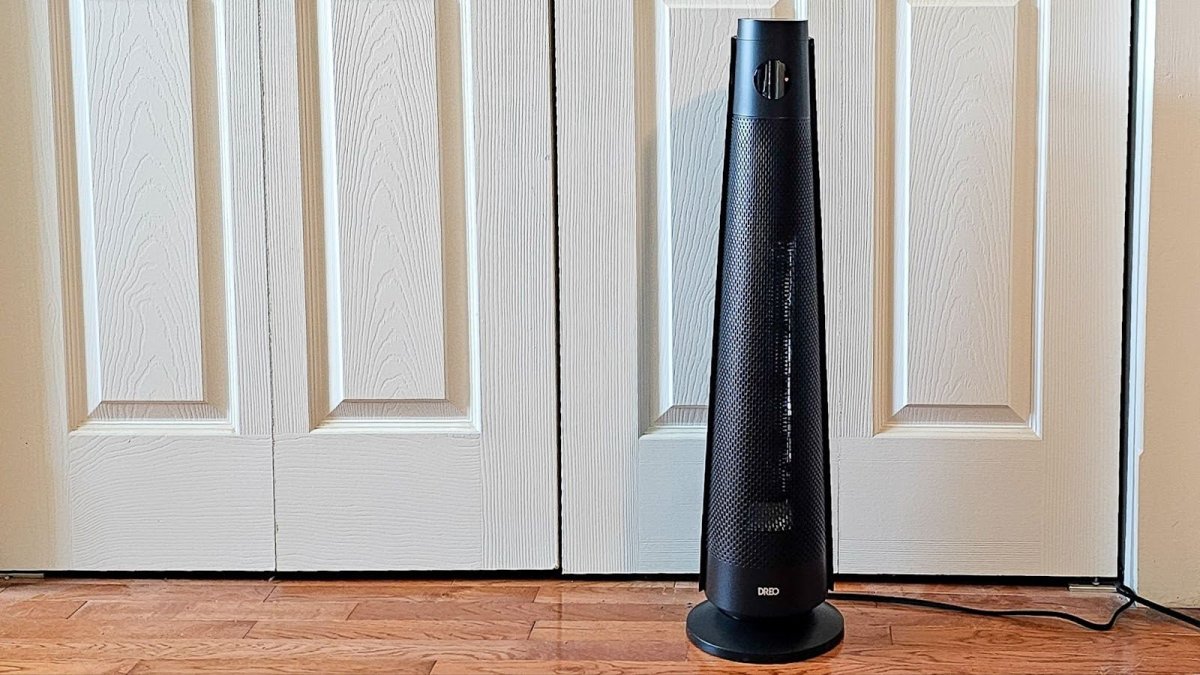

We may earn revenue from the products available on this page and participate in affiliate programs. Learn More ›
After unboxing the new Dreo space heater, I thought it might be a tower fan with its tall, contemporary design. However, I quickly discovered it’s a formidable space heater with excellent heating capabilities.
The Solaris 718 combines oscillation, quick heating, and programmable remote operation to deliver the rapid warmth needed to quickly heat a space. This isn’t your grandmother’s space heater that rattled, emitted a scary smell, and burned a hole in the carpet when the dog knocked it over. Keep reading to find out why I was impressed in my testing of the Dreo Solaris 718 in my own home.
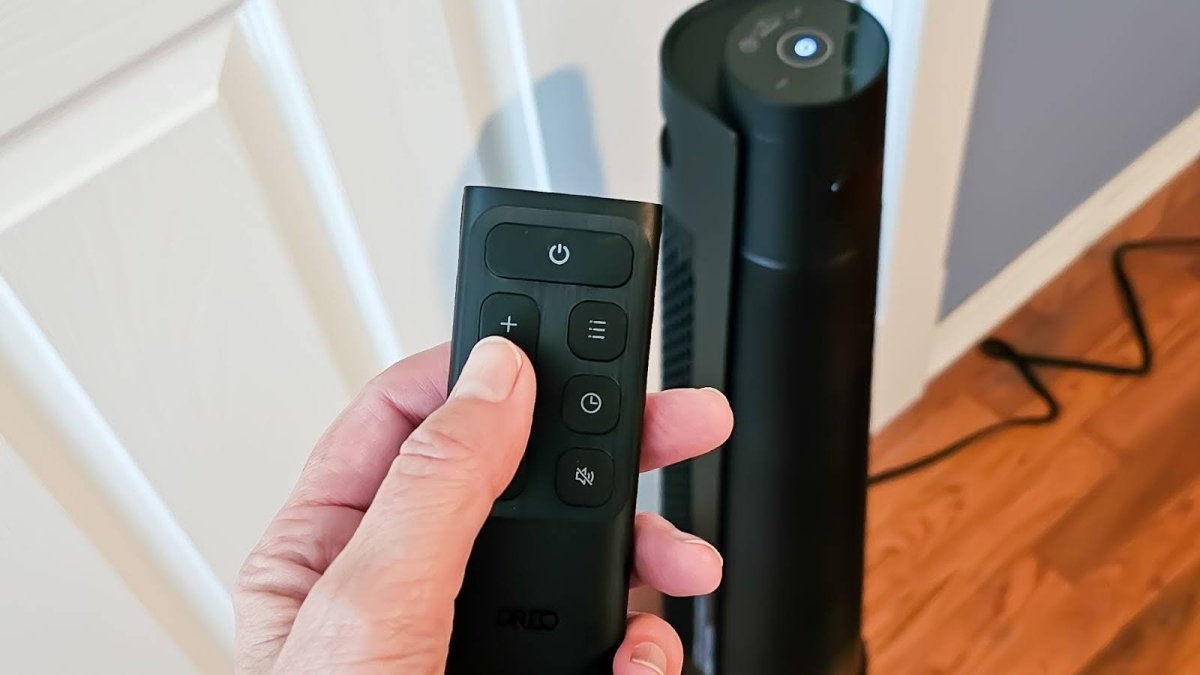
Dreo Solaris 718 Space Heater: At a Glance
Our rating: 4.5/5
| What We Like | What We Don’t Like |
| Fast, effective heating | No words on remote control |
| Energy-saving features | Pricier than other picks |
| Very quiet operation |
Testing the Dreo Space Heater
The Solaris 718 came completely assembled—all I had to do was take it out of the box and plug it in. I tested the portable heater in a 18-foot-long by 12-foot-wide room (216 square feet), which is smaller than the 300-square-foot space the manufacturer says the heater can handle.
I tested the heater on a day when the outdoor temperature was 65 degrees Fahrenheit and the indoor temperature was 60 degrees Fahrenheit. Ultimately, heating results will vary depending on not only the outdoor temps but also the size of the room, ceiling height, number of windows, and the R-value of the insulation in the walls.
In addition to timing how long it took the Dreo fan to raise the room temperature, I noted build quality, ease of use, and how loud the heater was during operation.
| Dreo Space Heater Specs | |
| Type | Corded electric |
| Coverage | 300 square feet |
| Oscillating | Yes |
| Remote control | Yes |
Heating Performance
On its highest level, the Dreo Solaris 718 raised the room’s temperature from 60 to 70 degrees Fahrenheit in just under 30 minutes. During that time, I ran the heater in oscillation mode, which distributed the heated air uniformly around the room.
Then, I tried out the other heating modes. It comes with five modes, each offering a different amount of heat output. It also has three fan settings. I would probably save the highest couple of heat modes for when I needed to generate a lot of heat rapidly.The 718 comes with its own built-in thermostat, which seems to be accurately calibrated. I observed that it registered the same temperature as the air-quality control monitor I was using to test the heater’s accuracy.
Being able to control the electric heater either directly on the machine or by remote is a nice perk. However, I would prefer that the remote have words rather than only symbols. Not everyone is likely to understand each symbol, so adding the words would make it easier to understand the operations.
Saves on Energy Costs
Virtually any energy-efficient space heater will help save on heating costs if used in a single room while not using the central heating system. For many, this may be feasible in late fall when all you need to heat is a kitchen or family room. Since the Solaris 718 is portable at just 8 pounds, it’s easy to transport from one room to another with its built-in carry handle on the back.
Using its Eco mode (the lowest mode) draws less energy, and this setting is ideal for maintaining a set temperature after warming up a room using a higher-level mode. In some regions, Eco mode may be sufficient any time of year.
The Dreo’s built-in thermostat will also help reduce the risk of running the heater too long after it reaches the selected temperature. I was able to program the Solaris 718 to the temperature I wanted, and it only came on when the room temperature dropped below that number. However, running your HVAC system and using the space heater simultaneously won’t result in savings.
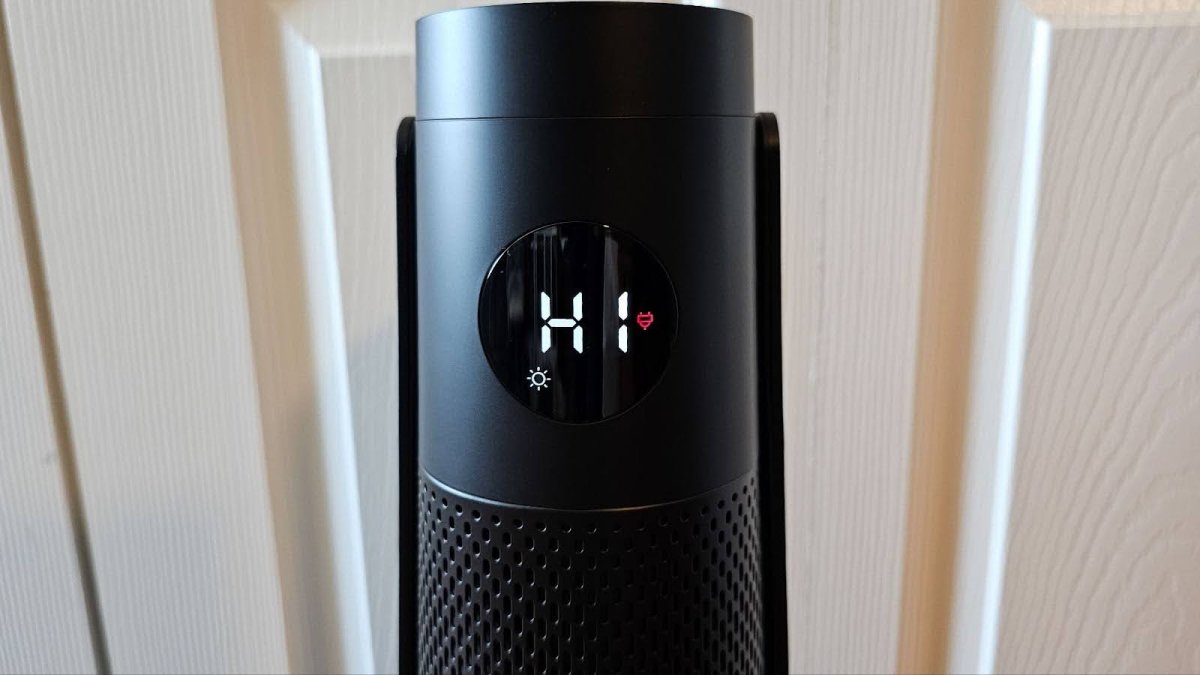
Safety First: Protection Features
The Solaris 718 is a positive temperature coefficient (PTC) heater, which means it incorporates self-regulating ceramic heating technology to prevent overheating. That contributes to the electric heater’s overall safety. However, it’s still a heater, and as such, users will want to take sensible precautions, such as positioning it 3 feet away from anything flammable, including curtains, upholstered furniture, pillows, blankets, and pets.
The Dreo space heater also comes with some nice safety features of its own, including cool-touch housing, V-0 flame retardant, tip-over shutoff, and Dreo’s patented FortPlug that acts like a circuit breaker to shut off power at the plug if it senses overheating.
The 718 features a child lock that can be enacted by pressing the controls together on the main panel. Combined, these safety features make the space heater a safer pick for use in homes.
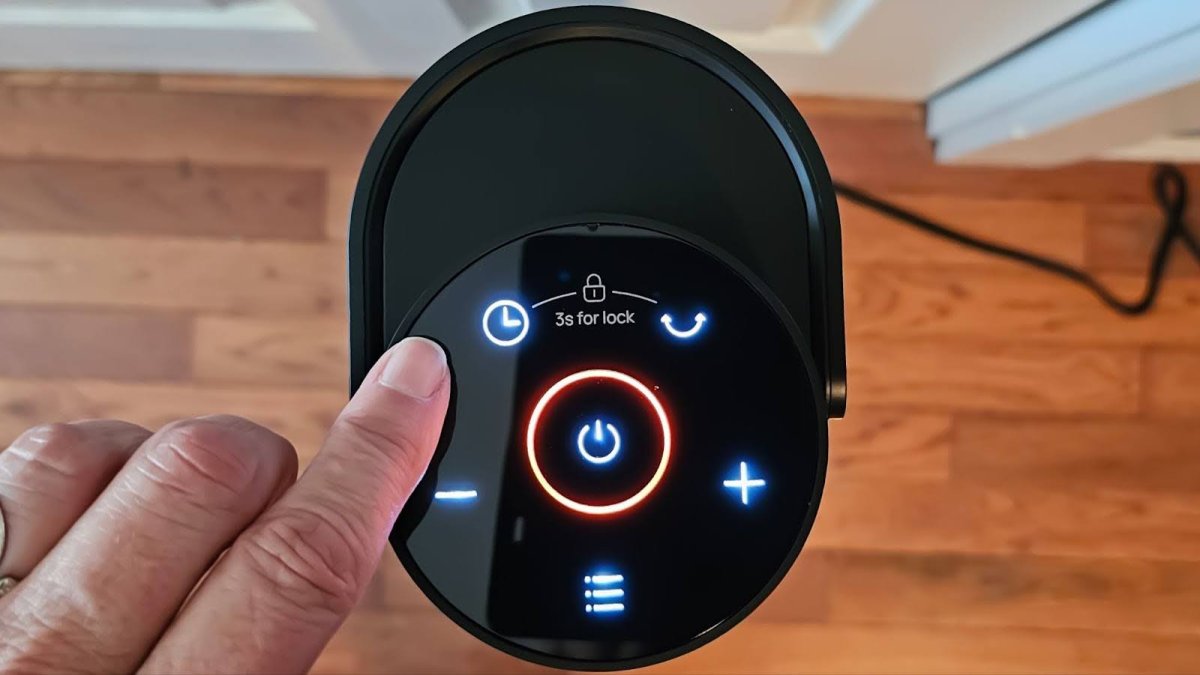
Whisper Quiet
The 718 is listed as generating just 25 decibels on its lowest mode—quieter than a whisper. For practical purposes, I couldn’t hear it on Eco mode unless I was within about 4 feet of the machine. If you use this mode to supplement heat during the night, it shouldn’t disturb your sleep.
Although it generates a little more sound on the higher modes, it’s not noisy by a long shot. I found the sound on the highest mode to be similar to white noise, and I could easily tune it out. I thought it was more soothing than annoying.
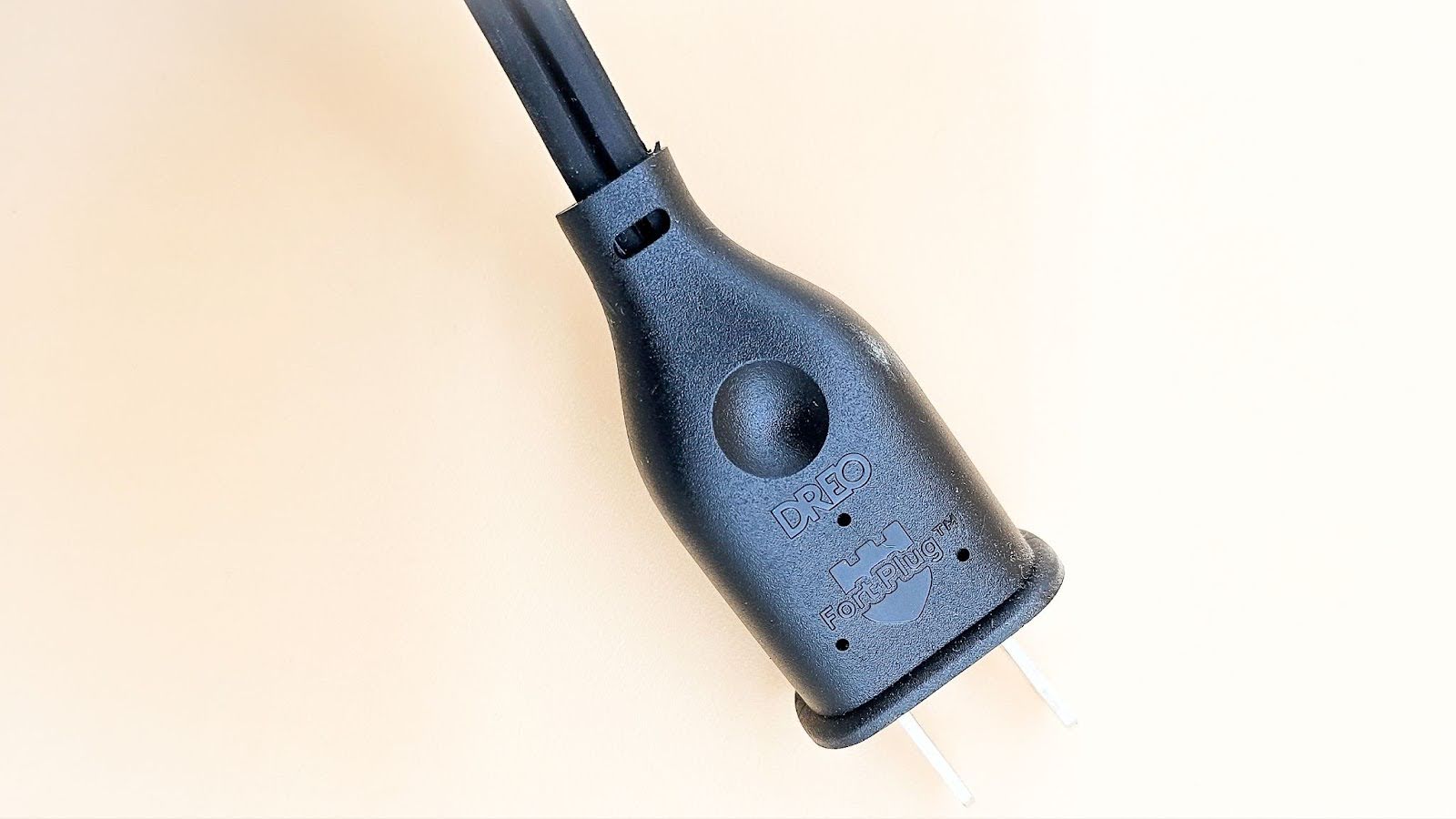
How much is reliable, quiet, and safe heat worth to you?
The Dreo Solaris 718 is more expensive than some space heaters. It currently sells for $129.99 at both Amazon and Dreo. While I wish it would come down in price by $10 to $15, I still think it’s worth the investment based on how quickly and quietly it can warm up a chilly room. I also think the safety features Dreo has incorporated will offer peace of mind.
However, if you’re looking for a small space heater to use under a work desk or only on occasion, there are certainly less expensive models. The Solaris 718 is best suited for those who want to heat a single room—but a relatively large room—without turning on their HVAC system. When used in that manner, it should pay for itself over the course of a few weeks or so.
Product Comparisons
| Solaris 718 | Lasko Fan/Heater | Dr. Infrared Heater | |
| Type | Electric | Electric | Electric |
| Coverage | 300 square feet | 150 square feet | 576 square feet |
| Oscillating | Yes | Yes | No |
| Remote | Yes | Yes | Yes |
| Price | $129.99 | $129.99 | $112.03 |
So, is the Solaris 718 right for you?
The Solaris 718 is a good option for someone who needs to heat medium-to-large rooms in their home without relying on their HVAC system. I found the heater to be reliable, safe, and quiet, and I would not hesitate to use it in a family room, kitchen, or bedroom.
However, it’s not the most budget-friendly model on the market, so if your supplemental heating needs are occasional, you might want to consider a cheaper pick. This Dreo space heater is well made and should last several years, but it’s made for indoor use. If you’re looking for an outdoor model, you’ll want to check out our non-electric space heater lineup.
Meet the Tester
Glenda Taylor is a contractor, product tester, and writer focusing primarily on construction, DIY tools, and home appliances.
